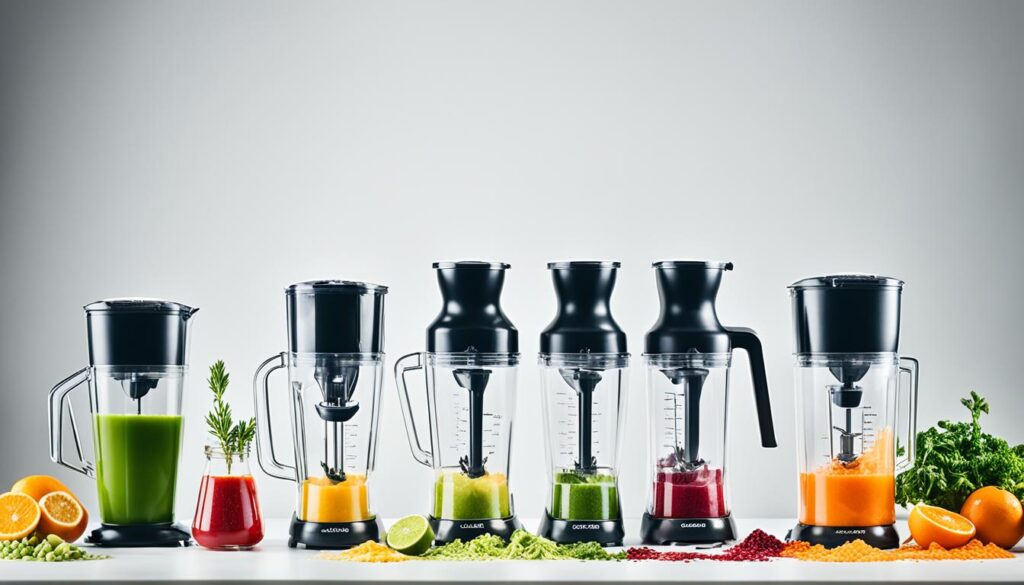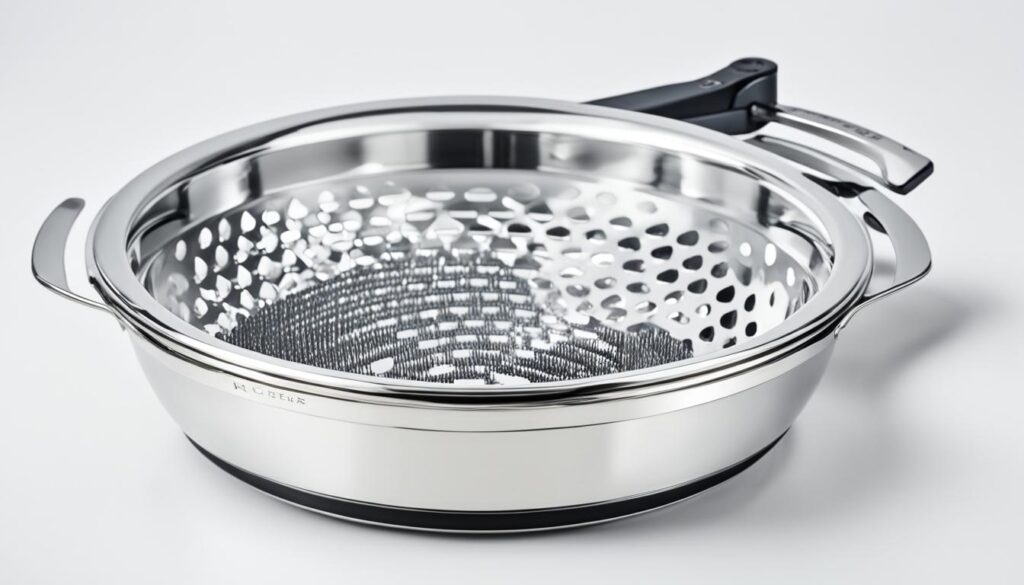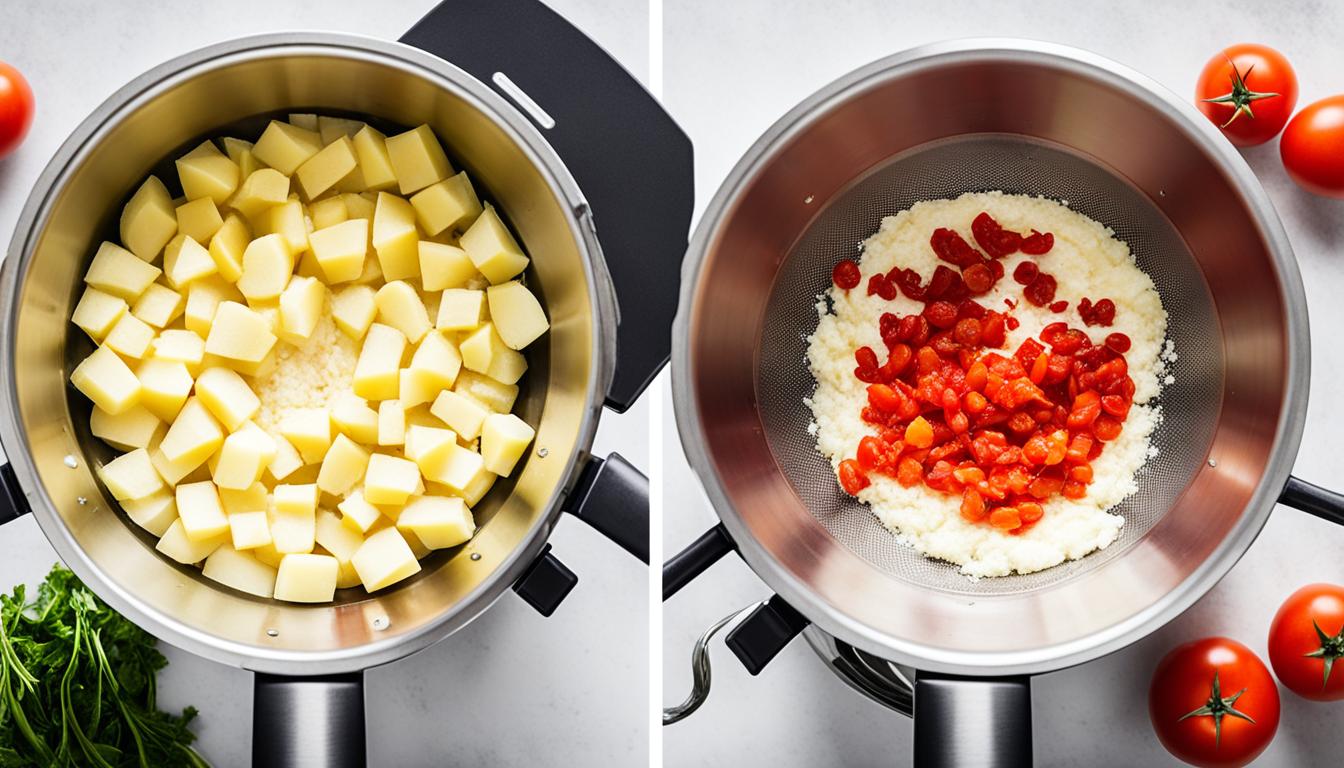Should you buy a food mill or a ricer? When it comes to making mashed potatoes, choosing the right kitchen tool can make all the difference in achieving the perfect texture. Both the food mill and ricer excel at breaking down potatoes without overworking them, resulting in fluffy and light mashed potatoes that are sure to impress. But which kitchen gadget should you choose?
The Potato Ricer: A Handy Tool for Fluffy Mashed Potatoes
A potato ricer is a handheld tool that looks similar to a giant garlic press. It is specifically designed to create smooth and fluffy mashed potatoes, making it an essential kitchen gadget for potato lovers. But how does a potato ricer work?
When using a potato ricer, cooked potatoes are placed into the perforated hopper. By applying pressure with a lever, the potatoes are forced through the small holes, effectively breaking them down into a fine and velvety texture. Unlike traditional mashing, which can overwork the potatoes and result in a gummy consistency, the ricer gently ruptures the cells only once, ensuring that the mashed potatoes remain light and airy.
One of the key benefits of a potato ricer is its simplicity. It is easy to use, requiring just a few simple steps to achieve perfect mashed potatoes. It is also a breeze to clean, as most ricers are dishwasher safe or can be easily rinsed under running water. Additionally, the compact size of a potato ricer makes it easy to store in a kitchen drawer or cabinet, minimizing clutter on your countertop.
It’s important to note, however, that a potato ricer is a unitasker kitchen tool, meaning it is primarily designed for one specific task – mashing potatoes. While it excels at creating fluffy mashed potatoes, it may not be as versatile as other kitchen tools that can perform various tasks. Therefore, if you’re looking for a multi-purpose tool, a potato ricer may not be the ideal choice.
Now that we’ve explored the benefits of a potato ricer, let’s take a look at some tips for proper potato ricer storage:
- Make sure to thoroughly clean and dry the ricer before storing it to prevent any moisture buildup.
- Store it in a dry and cool place to maintain its longevity.
- If your potato ricer comes with a storage case or pouch, utilize it to protect the tool from any potential damage.
The potato ricer is undoubtedly a valuable tool for achieving perfectly mashed potatoes. Its ability to create fluffy and velvety-textured mashed potatoes, combined with its easy-to-use design and compact storage, make it a must-have for potato enthusiasts.
The Food Mill: A Versatile Tool for Purees and Straining
A food mill is a manual kitchen tool that offers versatility in pureeing and straining soft food items such as boiled potatoes or tomatoes. This practical tool consists of a bowl fitted with a hand crank that rotates a plate, pushing the food through a perforated base.
With a food mill, you can effortlessly create smooth purees, remove seeds from fruit, and separate skin from peppers. It’s an indispensable tool for creating flavorful tomato sauces and other recipes that require a smooth texture.
Both home cooks and professionals can benefit from using a food mill. Its versatility makes it a valuable addition to any kitchen, allowing you to process a variety of soft foods with ease.
However, there are a few considerations when it comes to a food mill. Firstly, it can be bulky, requiring adequate storage space in your kitchen. Secondly, food mills tend to be pricier compared to other kitchen tools. Lastly, assembly and cleaning processes might be more involved and time-consuming compared to a ricer.
Uses of a Food Mill
- Creating smooth and velvety purees
- Straining seeds and skins from fruits and vegetables
- Preparing homemade tomato sauces
- Processing baby food
- Pureeing soups
Whether you’re a home cook looking to elevate your recipes or a professional chef handling large-batch food processing, a food mill is a versatile tool that can meet your needs.

| Advantages of a Food Mill | Disadvantages of a Food Mill |
|---|---|
|
|
Factors to Consider for Your Kitchen
When deciding between a food mill and a ricer, there are a few factors to consider. Firstly, consider the available space in your kitchen. If you have limited storage space, a ricer may be the more practical choice due to its compact size. It can easily fit into a drawer or cabinet, saving valuable kitchen real estate.
Secondly, consider your budget. Food mills can range in price, especially if you opt for a commercial-grade model. Take into account the amount you’re willing to spend on a kitchen tool and choose accordingly.
Lastly, consider your kitchen tool preferences. Do you prefer multi-purpose tools that can handle a variety of tasks? If so, a food mill may be the better option for you. Food mills are versatile and can be used for pureeing, straining, and even making sauces. On the other hand, if you primarily focus on potatoes or have a specific need for fluffy mashed potatoes, a ricer may be the right choice. Think about your cooking style and the specific tasks you’ll be using the tool for.
By taking these factors into consideration—kitchen space, budget, and kitchen tool preferences—you’ll be able to make an informed decision and choose the tool that best suits your needs.
Alternatives to Food Mills and Ricers
If you don’t have a food mill or a ricer on hand, there are several alternatives you can use to achieve similar results. These kitchen tools can help you with pureeing and mashing tasks, providing an alternative way to achieve the desired textures.
1. Food Processor with a Sieve
If you own a food processor, you can use it in combination with a sieve to achieve results similar to a food mill. Simply process the cooked food until smooth in the food processor and then pass it through a fine-mesh sieve to remove any lumps or peels. This method works well for making purees or sauces.
2. Blenders and Immersion Blenders
Blenders and immersion blenders can also be used for pureeing tasks, although they may not produce the exact smooth texture that a food mill can achieve. These tools are great for making smoothies, soups, and sauces, but keep in mind that they may not work as effectively for removing peels or seeds.
3. Potato Masher
A potato masher is a handy tool for creating mashed or pureed textures. It works well for softer foods like potatoes, bananas, or avocados. While it may not provide the same level of smoothness as a food mill or ricer, it can still get the job done if you prefer a chunkier texture.
4. Spoon and Mesh Strainer
If you need to strain out any lumps or peels from your puree, a spoon and mesh strainer combo can do the trick. Simply use the back of a spoon to press the mixture through the mesh strainer, removing any unwanted solids and achieving a smoother texture.
5. Mortar and Pestle
A mortar and pestle is a classic tool for grinding and mashing ingredients. While it may require more effort than other alternatives, it can be used to create small batches of purees or pastes with a rustic texture. This method works well for herbs, garlic, or spices.
6. Box Cheese Grater
In a pinch, a box cheese grater can help you achieve finely grated textures. While not suitable for pureeing, it can be useful for grating vegetables like carrots or zucchini to create a similar texture to mashed or pureed food.
Remember, these alternatives may not provide the same level of convenience, speed, or precision as a food mill or ricer, but they can help you achieve mashed or pureed textures depending on the specific task at hand.

Comparison of Food Mill Substitutes
| Alternative | Pros | Cons |
|---|---|---|
| Food Processor with Sieve | – Can achieve smooth purees | – Requires extra equipment (sieve) for desired texture |
| Blenders and Immersion Blenders | – Versatile tools for various tasks | – May not remove peels or seeds as effectively |
| Potato Masher | – Suitable for creating chunkier textures | – May not achieve a smooth puree |
| Spoon and Mesh Strainer | – Allows for straining unwanted solids | – Requires manual pressing for desired texture |
| Mortar and Pestle | – Ideal for grinding small batches of ingredients | – Requires more effort and time-consuming |
| Box Cheese Grater | – Enables grating vegetables for similar texture | – Not suitable for pureeing or mashing |
Pros and Cons of Food Mills
Food mills are versatile kitchen tools that offer both advantages and disadvantages. Let’s explore the pros and cons of using a food mill:
Pros of Food Mills
- Ability to puree and strain soft foods in one shot
- Great for making smooth purees, removing skin and seeds from fruits, and creating tomato sauces
- Provides consistent results and a uniform texture
Cons of Food Mills
- Bulky and take up significant space in the kitchen
- Can be more expensive compared to other kitchen tools
- Assembly and cleaning can be time-consuming and require more effort, especially when dealing with interchangeable plates
Despite the cons, food mills are highly useful and versatile tools for any cooking enthusiast or professional chef. They offer the convenience of pureeing and straining soft foods in one simple step, allowing you to create smooth and delicious dishes. However, it’s essential to consider the size and storage requirements of a food mill, as well as the cleaning process involved.
Pros and Cons of Ricers
Ricers have their own set of advantages, such as producing fluffy and light mashed potatoes or other purees. They are easy to use and clean, with fewer moving parts and simple assembly. Ricers are also compact and can be easily stored in a drawer or cabinet.
However, ricers are limited in their functionality and are primarily designed for potatoes. They may not be suitable for processing larger quantities of food or handling tougher vegetables. Additionally, a ricer can only work with one potato at a time, which may be time-consuming for larger batches.
Here’s a comparison table highlighting the pros and cons of ricers:
| Pros of Ricers | Cons of Ricers |
|---|---|
| Produces fluffy and light mashed potatoes | Limited functionality beyond potatoes |
| Easy to use and clean | Not suitable for processing larger quantities of food |
| Compact size for easy storage | Can only work with one potato at a time |

Overall, despite the limitations, ricers can be a valuable tool in the kitchen for achieving the perfect texture in mashed potatoes or other purees. Their simplicity, ease of use, and compact size make them a convenient addition to any cook’s arsenal.
Conclusion
After weighing the options between a food mill and a ricer, choosing the right kitchen tool comes down to your specific needs and preferences. If your focus is on potatoes or achieving fluffy mashed potatoes, a ricer is the perfect choice. Its simplicity of use, ease of cleaning, and compact size make it a practical addition to any kitchen. However, if you require versatility and the ability to process various soft foods, a food mill may be the better option.
A food mill offers the advantage of pureeing and straining soft foods in one step. It can be a valuable tool for making smooth purees, removing seeds and skin from fruits, and preparing tomato sauces. Despite being bulkier and potentially more costly, food mills provide versatility and are suitable for both home cooks and professionals. Consider factors such as available kitchen space, budget, and personal preferences to make an informed decision.
Ultimately, the choice between a food mill and a ricer depends on what you value most in a kitchen tool. Whether it’s achieving fluffy mashed potatoes or having a versatile food processing tool at your disposal, both options have their merits. Take into account your specific cooking needs, the space you have available, and your budget to choose the right tool for your kitchen. Happy cooking!
